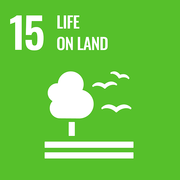
Environmental change and pandemic risk: the answer is sustainable development
The current Covid-19 outbreak, emerged in Hubei Province, China, and caused by a coronavirus related to Sars, is still threatening the world. This is just the latest of a long series of pandemics that have frightened worldwide populations in the last several years: Ebola, Sars, Zika, MERS, and H1N1 just to mention a few. All these pandemics have something in common: their origin is zoonotic, that is they originate from animals, wild animals in particular. But is prevention actually possible?
Almost all recent infectious disease emergences, such as Covid-19, have been linked to high human population density, unsustainable levels of hunting and trading of wildlife, environmental change such as deforestation and expansion of agricultural land, and intensification of livestock production (especially in countries with high biodiversity). All these activities intensify the risk of contact, and pathogen transmission, among humans, livestock, and wildlife.
A recent paper, published on the journal PNAS and led by Moreno Di Marco of the Department of Biology and Biotechnologies Charles Darwin at Sapienza University of Rome, talks about the risk of pandemic outbreaks due to human impact on the environment. This study underlines how this risk does not depend on the presence of natural areas or wild animals per se, but rather on the way anthropogenic activities alter such areas and species.
According to the study, the current lack of focus on these interactions generates a policy blind spot that must be addressed to ensure sustainable development efforts are not counterproductive and do not compromise global health security. At this point, it is necessary to admit the existence of a middle ground between socioeconomic development, such as food and energy production, its effect on the environment and the biodiversity it hosts, and pandemic risk.
“Interactions between environmental change and pandemic risk – says Moreno Di Marco – have been underestimated. We urge that pandemic risk mitigation becomes an integral part of sustainable socio-economic planning. Research and applications for achieving this integration must be prioritized now if we want to prevent, rather than react to potentially catastrophic consequences for humanity.”
References:
Sustainable development must account for pandemic risk - Di Marco M., Baker M., Daszak P., De Barro P., Eskew E.A., Godde C., Harwood T., Herrero M., Hoskins A., Johnson E., Karesh W.B., Machalaba C., Navarro Garcia J., Paini D., Pirzl R., Stafford Smith M., Zambrana-Torrelio C., Ferrier S. - PNAS (2020)
Further Information
Moreno Di Marco
Department of Biology and Biotechnologies "Charles Darwin"
moreno.dimarco@uniroma1.it
